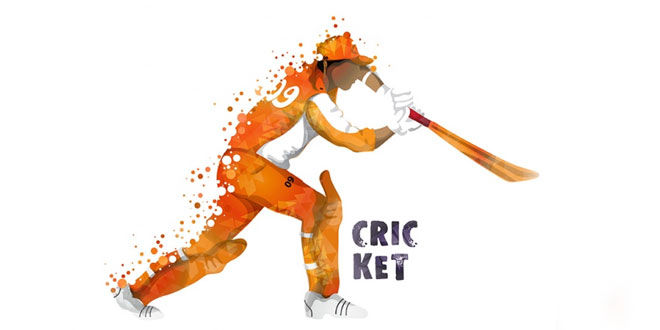Page [III]
Question: ‘Cricket has changed with changing times and yet fundamentally remained true to its origin in rural England’. Justify by giving examples.
Answer:
- No specification for ground: Even after more than 300 years of its origin still there is no specification regarding the measurement of the playing ground.
- Equipment: Cricket’s most important tools are all made of natural, pre-industrial materials. The bat is s made of wood as are the stumps and bails. The ball is made with leather, twine and cork. Even today, both bat
and ball are hand-made, not industrially manufactured. The material of the bat changed slightly over time. Once it was cut out of a single piece of wood. Now it consists of two pieces, the blade which is made out of the wood of the willow tree and the handle which is made out of cane that became available as European colonialists and trading companies established themselves in Asia. Unlike golf and tennis, cricket has refused to remake its tools with industrial or man-made materials: plastic, fiber glass and metal have been firmly rejected. - Protective equipment: Some of its equipment have changed with the changing time like gloves, helmet and pads. They all are manufactured by machines.
Question: ‘The organisation of cricket in England reflected the nature of English society’. Explain.
Answer:
- The English society at that time was divided into the rich and the poor. Similarly, there was also a division in cricket. The rich players who played for leisure were called amateurs and the poor who played for livings were called professionals.
- As most of the administrative laws were favoring the rich class, similarly most of the cricket laws were in favor of the batsmen as Amateurs tended to be the batsmen.
- Most of the hard work was done by the poor, similarly, in cricket, fielding and bowling was done by the professionals.
- Only the rich were having the right to lead, similarly, in cricket only the batsmen were made the captain.
Question: Mention any three features of post packer game of cricket.
Answer:
- Cricket became a marketable game.
- Colored dress, protective helmets, field restrictions, cricket under lights, became a standard part of the post Oackergame.
- Television coverage beamed cricket into small towns and villages.
Question: ‘Cricket in India was organised on the principle of race and religion’. Justify.
Or
How was the cricket used by the Britishers to spread their policy of racism?
Answer:
- When there was a quarrel between the Bombay Gymkhana and the Parsi cricketers over the use of public park, the Britishers favored the Bombay Gymkhana.
- They regarded religious communities as separate nationalities. That is why they used to approve applications for clubs on the basis of community.
- They encouraged pentangular tournament as it was based on communities.
- The first class cricket was also organised on communal and racial fines. The teams that played colonial India’s greatest and most famous first-class cricket tournament did not represent regions, but religious communities.
Question: ‘The center of gravity in cricket has shifted away from the old Anglo- Australian axis.’ Justify by giving examples.
Answer:
- The cricket headquarters has been shifted from London to tax free Dubai.
- England and Australia have lost their veto power right.
- Innovations like IPL, doosra and reverse swing have mainly come from the subcontinental teams of India, Pakistan and Sri Lanka.
- India has the largest viewership for the game amongst the cricket playing nations and the largest market in the world.
Question: Explain the journey of cricket progress in India.
Answer:
- Cricket at initial stage: Cricket in colonial India was organised on the principle of race and religion. The first record we have of cricket being played in India is from 1721, an account of recreational cricket played by: England sailors in Cam-bay.
- The Cricket Clubs: The first Indian club, the Calcutta Cricket Club, was established in 1792. Through the
eighteenth century, cricket in India was almost wholly a sport played by British military men and civil servants in all-white clubs and gymkhanas. - Cricket by Parsis: Parsis were the first to play cricket in India. They were close to Britishers because of their interest in trade and western education. They founded the Oriental Cricket Club in Bombay in 1848 and later on Parsi Gymkhana.
- Clubs by other communities: The establishment of the Parsi Gymkhana became a precedent for other Indians who in turn established clubs based on the idea of religious community. By the 1890s, the Hindus and Muslims were busy gathering funds and support for a Hindu Gymkhana and an Islam Gymkhana. The British did not consider colonial India as a nation.
- Quadrangular Tournament: This history of gymkhana cricket led to the first-class cricket being organised on communal and racial lines. The teams that played colonial India’s greatest and most famous first-class cricket tournament did not represent regions, as teams in today’s Ranji Trophy currently do, but religious communities. The tournament was initially called the Quadrangular, because it was played by four teams: the Europeans, the Paresis, the Hindus and the Muslims. It later became the Pent-angular when a fifth team was added, namely, the Rest, which comprised all the communities left over, such as the Indian Christians.
 Class Notes NCERT Solutions for CBSE Students
Class Notes NCERT Solutions for CBSE Students




